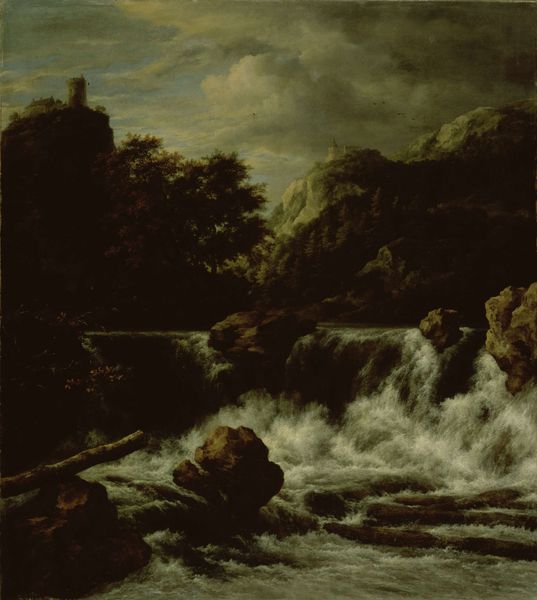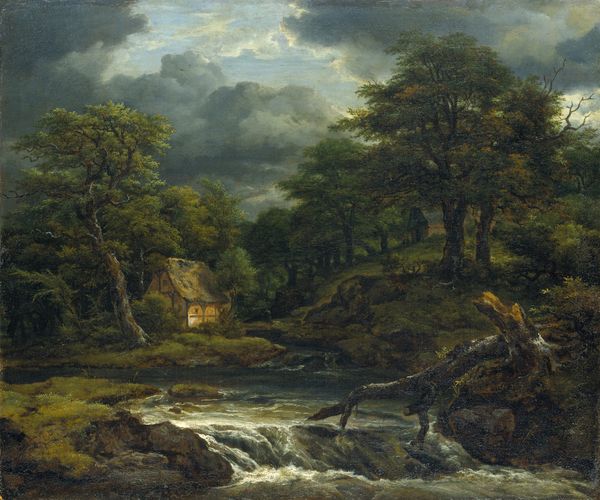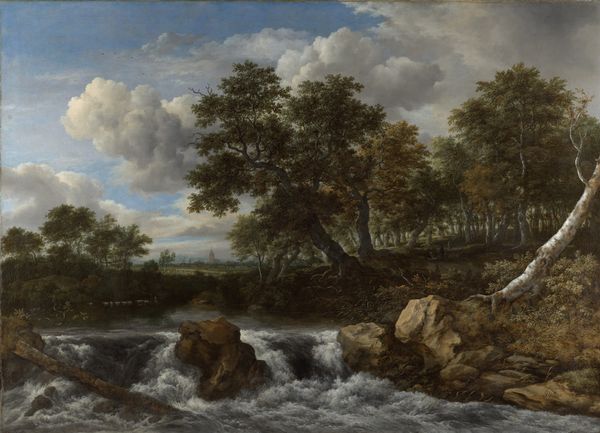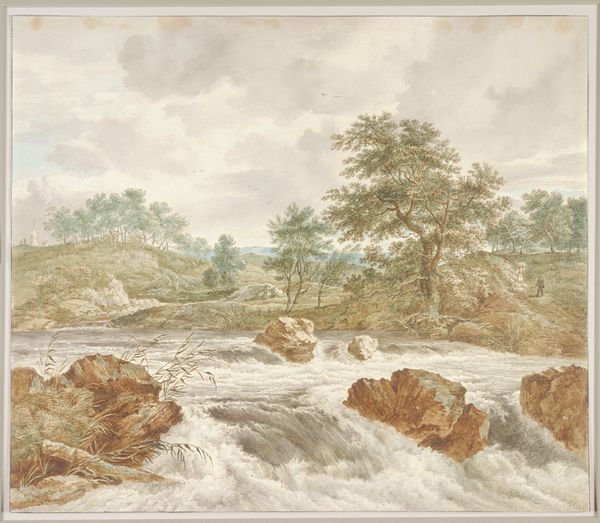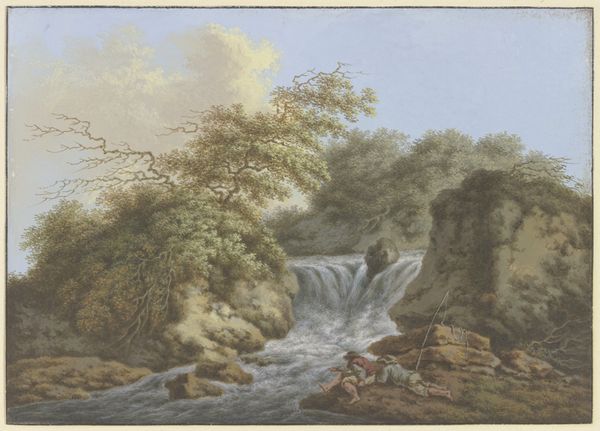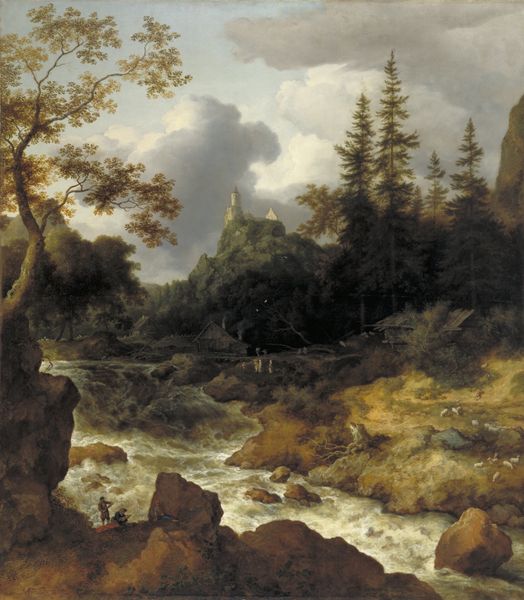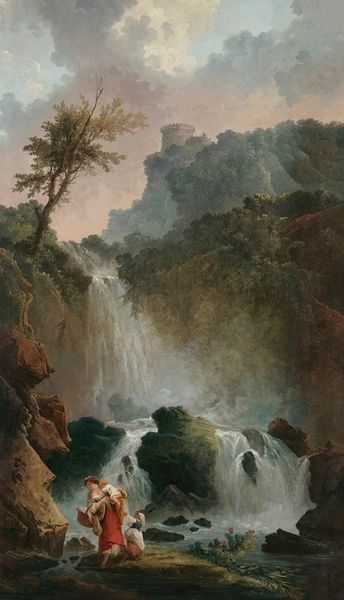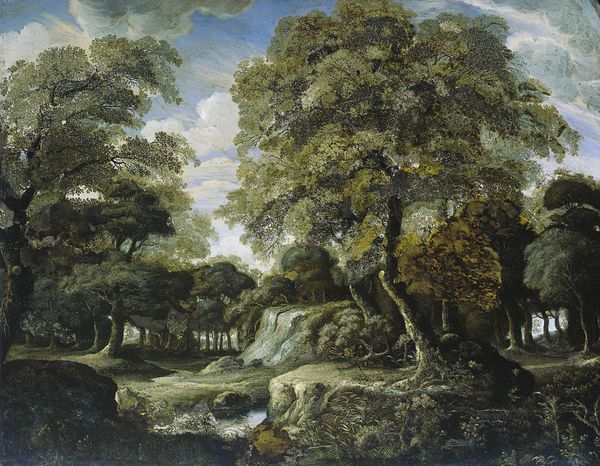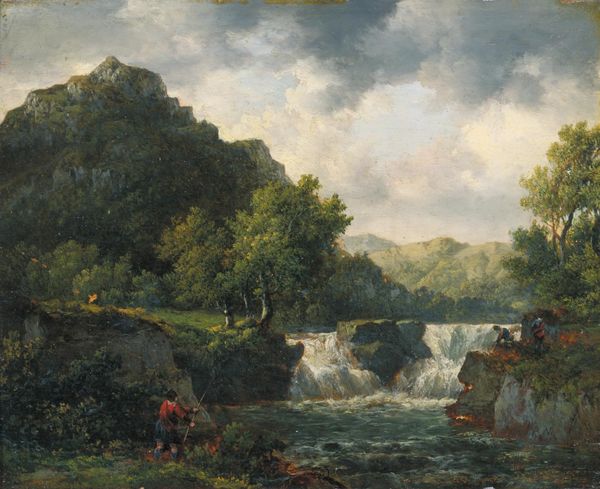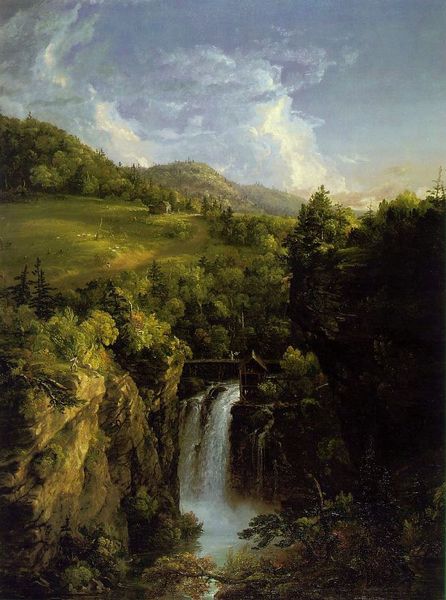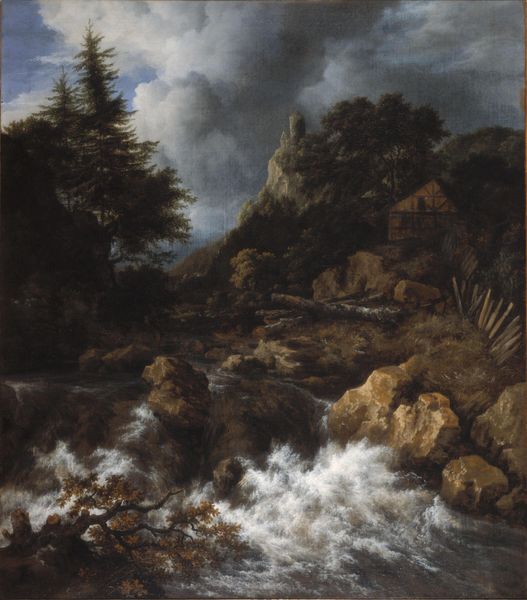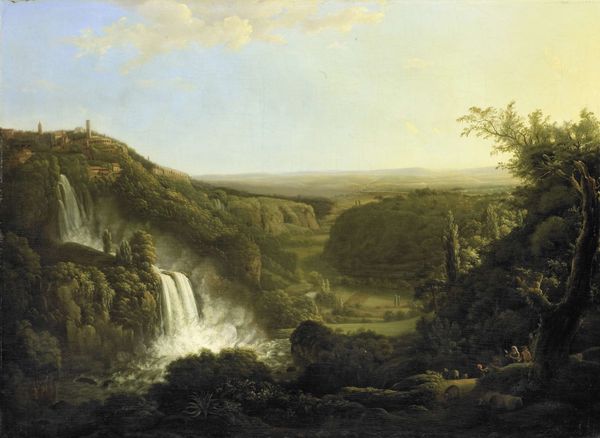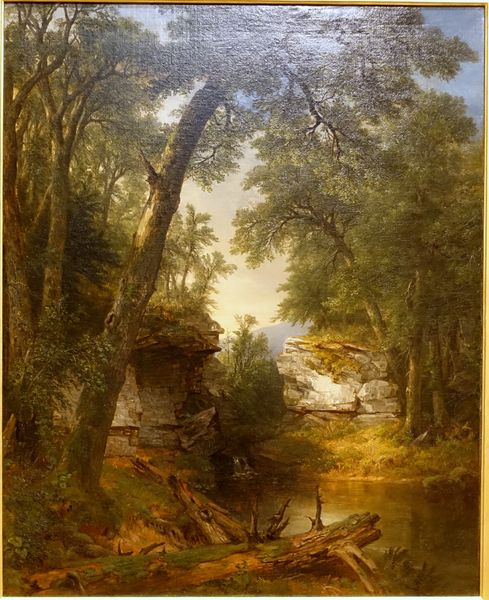
oil-paint, oil, canvas
#
baroque
#
oil-paint
#
oil
#
landscape
#
waterfall
#
oil painting
#
canvas
#
underpainting
#
building
Dimensions: 85.2 x 85.3 cm
Copyright: Public Domain
Editor: Here we have Jacob van Ruisdael’s "Waterfall in the Foothills", made around 1670 using oil on canvas. There's such dynamic energy in the water itself; I’m curious about how this kind of scene would have been viewed by people at the time? Curator: That's a great question! Seventeenth-century Dutch landscape painting wasn't just about pretty scenery. It was deeply tied to national identity. After the Dutch Republic won independence, representing the local landscape became a point of pride. How does this waterfall in a "Norwegian" setting play into the Dutch consciousness? Editor: So it's less about a literal depiction of Norway and more about… Dutch aspirations, or perhaps anxieties, about nature? It almost feels like the sublime, a sense of awe but also danger. Curator: Precisely! Think about the societal role of these images. Who was buying and displaying landscapes like these? The rising merchant class. Displaying control and understanding of nature through these paintings underscored their position in Dutch society. What kind of statements do you think these images are meant to project about society's control? Editor: It suggests progress and mastery, but also maybe an underlying fear of nature's power. Like they're saying, "We admire this untamed force, but we also keep it at a distance, within a frame." Curator: Excellent point! And look closely at that little building nestled in the landscape. The placement suggests that we are welcome and may cohabitate the scene... for a time, reinforcing human influence within this "wild" landscape. Considering all this, how might our view of this work shift knowing the Dutch political context? Editor: I see it less as just a pretty picture now and more as a statement about Dutch identity, their relationship with nature, and the social values of the time. It really grounds the painting in its specific cultural moment! Curator: Exactly. By looking at art this way we acknowledge it as both an aesthetic experience and a historical artifact, reflecting its own era.
Comments
No comments
Be the first to comment and join the conversation on the ultimate creative platform.
